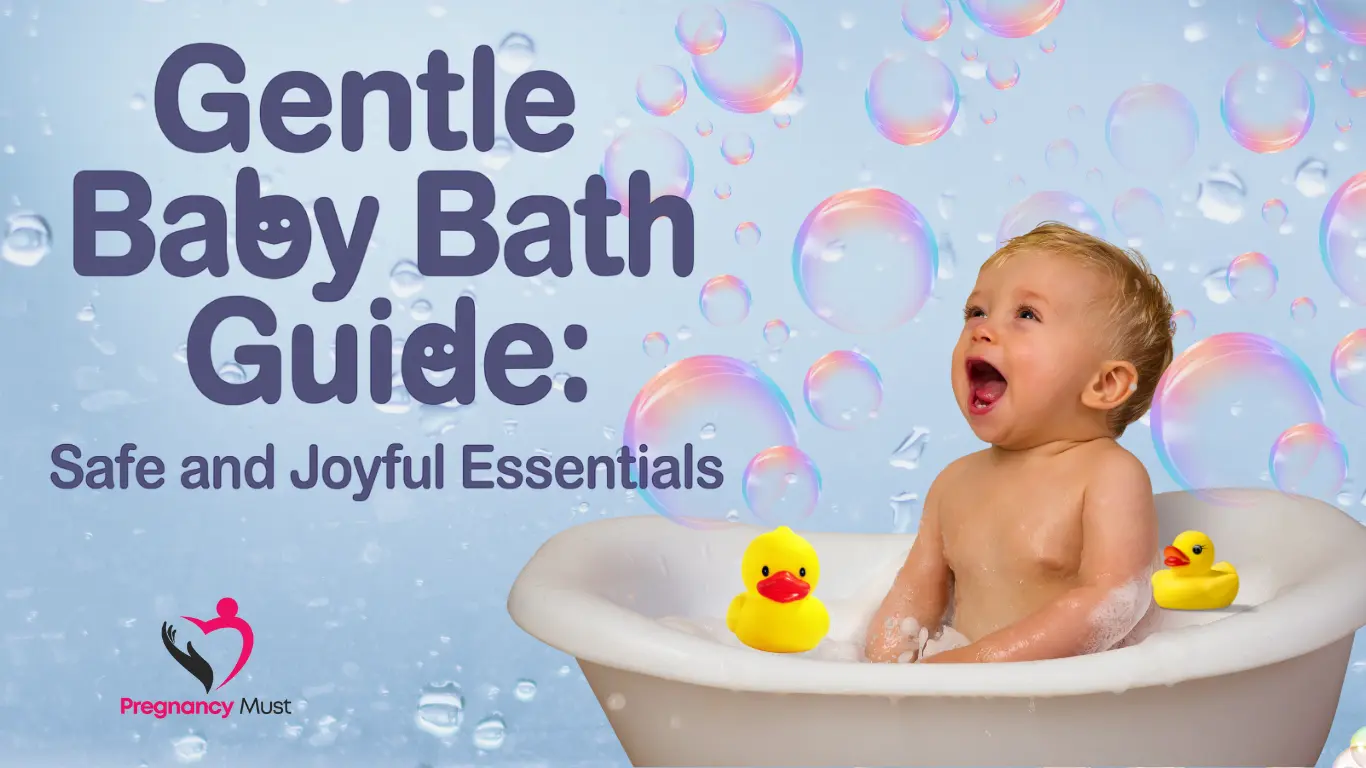Baby bath time is more than just a routine—it’s a warm, nurturing ritual that creates lasting memories. As a parent there is need to ensure that your baby when with the water there is safety, comfort, and fun every moment he spends in the water. So, whether you are taking a bath with your newborn infant or a wriggling toddler, some tips on the norms will help. It explains everything about selecting the most suitable baby bath tub, the appropriate time of starting baby bath daily, and having each bath as entertaining and stress-free for both of you.
Table of Contents
- Why Baby Bath Time Matters
- When to Start Bathing Baby Daily
- Choosing the Right Baby Bath Tub
- Baby Bath Seat: Added Support for Growing Babies
- Baby Bath Towels: Softness and Safety
- Baby Bathing Suit: What You Need Beyond the Tub
- Step-by-Step Baby Bath Routine
- Tips to Make Bath Time Easier
- Baby Bath Checklist: What You Really Need
- FAQs: Baby Bath Time Questions Answered
- Final Thoughts: Making Baby Bath Time Special
Why Baby Bath Time Matters
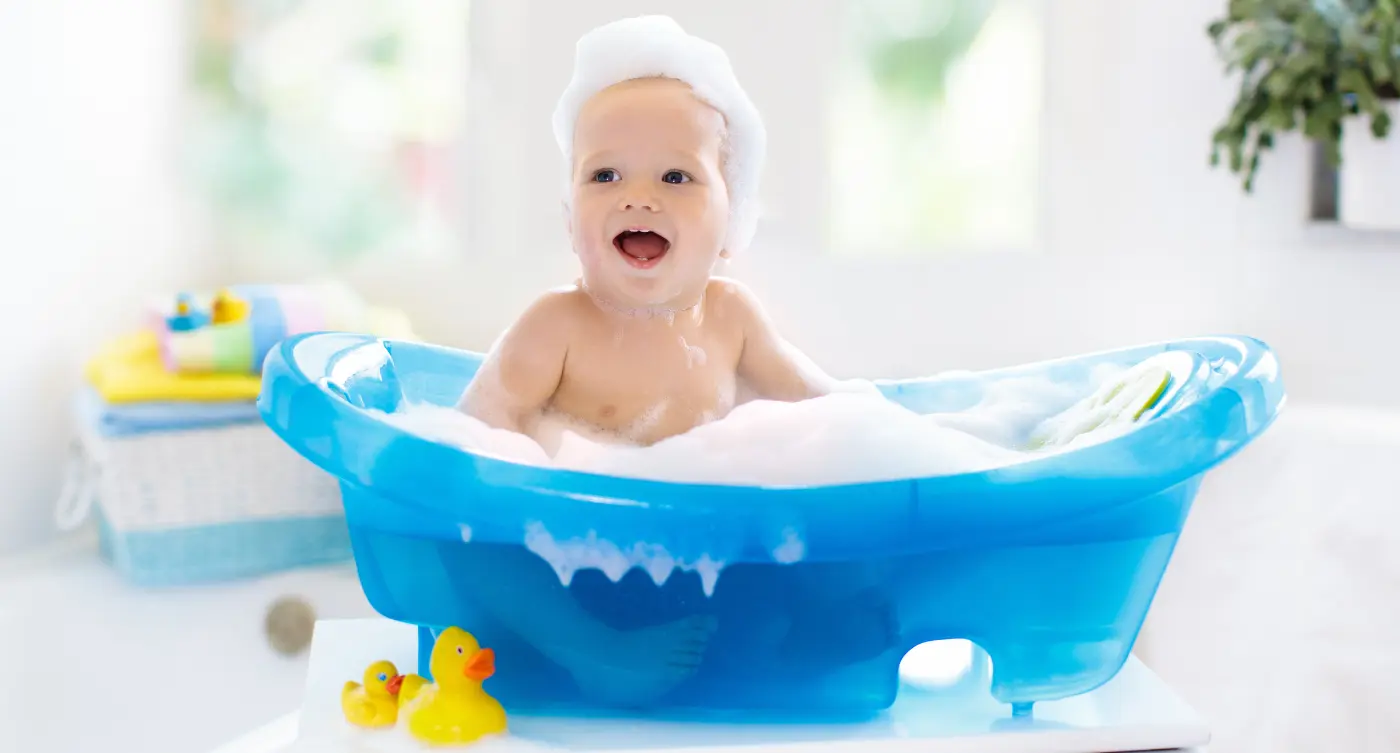
The baby’s bath time is not just about cleaning—it’s about bonding, development, and comfort.
During bath time:
- Babies learn to enjoy water and sensory experiences.
- Parents connect through gentle touch, eye contact, and play.
- Routines are formed, helping babies understand transitions like bedtime.
By cultivating a consistent and enjoyable baby bath routine, one is significantly contributing to their infant’s emotional as well as physical growth. From soothing their senses to assisting in the regulation of sleep patterns, a baby bath sets the groundwork for a more joyful and healthier child. One must never undervalue the influence of this uncomplicated yet nurturing ritual.
When to Start Bathing Baby Daily
Many parents wonder: Should I bathe my baby every day? The answer depends on your baby’s age, activity level, and skin sensitivity. Understanding when to begin daily baths—and when to hold off—can help protect your baby’s delicate skin while promoting hygiene and comfort.
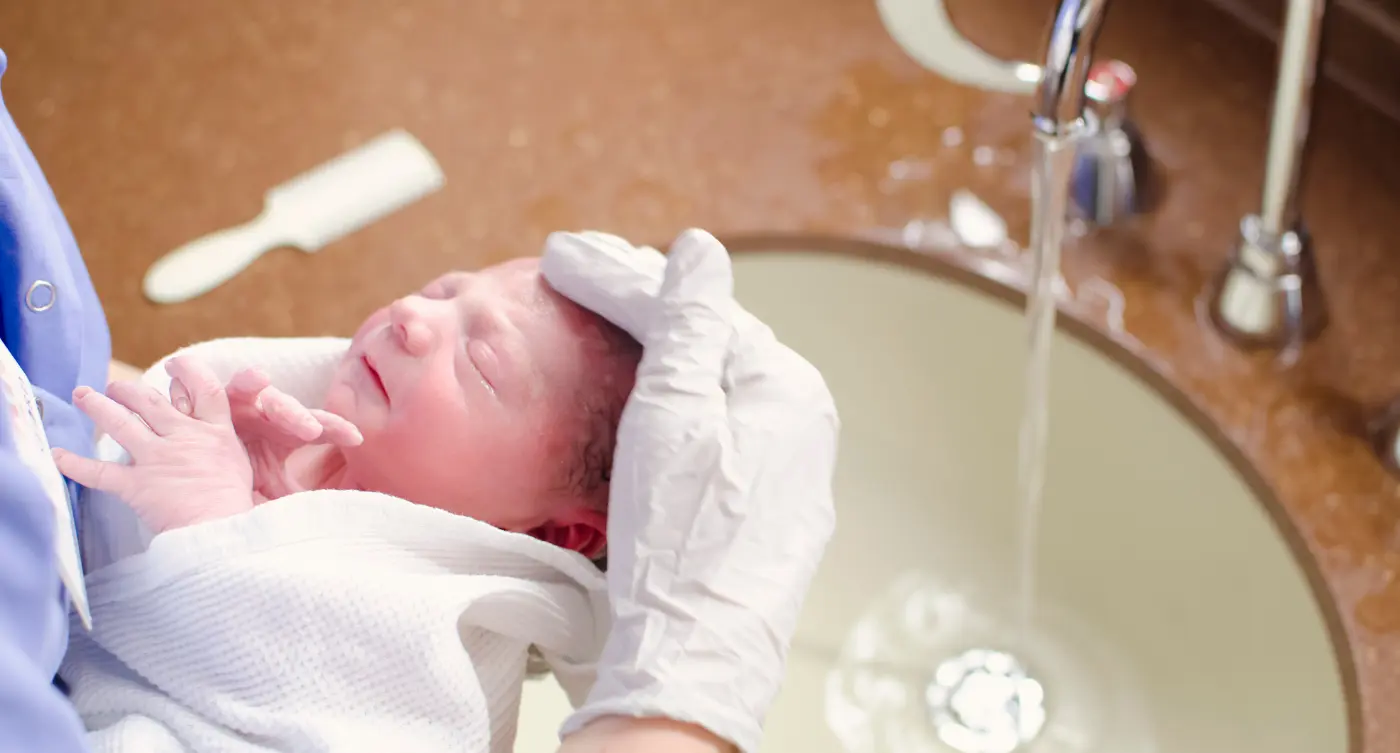
Newborn Stage (0–1 month)
- Stick to sponge baths until the umbilical cord stump falls off (typically within 10–14 days).
- Focus on gently wiping the face, neck folds, diaper area, and hands using a soft washcloth.
Infant Stage (1–6 months)
- Two to three baths per week are sufficient unless your baby spits up frequently or has a messy diaper.
- Start using a bath tub with shallow, warm water and supportive padding for comfort.
Older Babies (6–12 months)
- Once your baby begins crawling, eating solids, and exploring more, you may choose to start bathing baby daily.
- Daily baths not only keep your baby clean but also establish a calming and predictable bedtime ritual.
Tip: After each bath, apply a gentle, fragrance-free moisturizing lotion to lock in hydration and keep baby’s skin soft and healthy.
Choosing the Right Baby Bath Tub
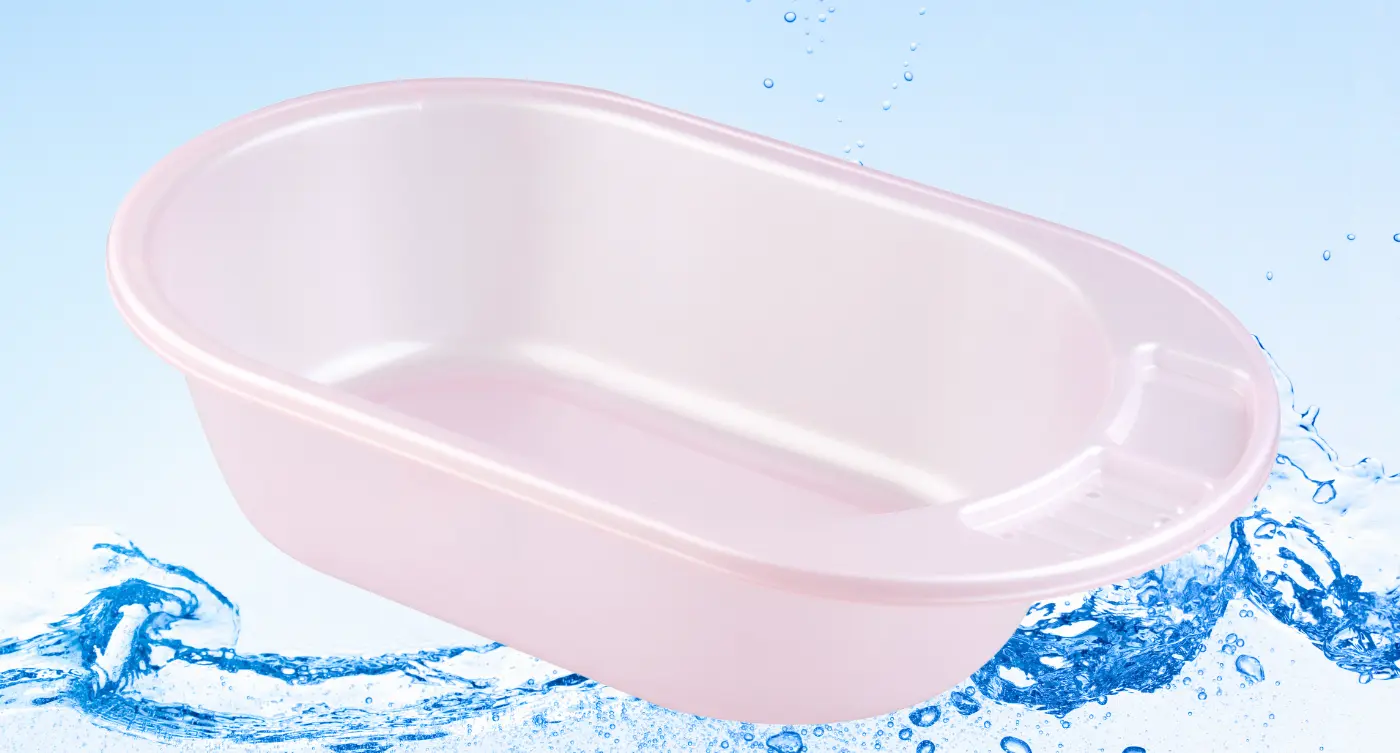
A safe and supportive bath tub sets the foundation for a stress-free and enjoyable bathing routine. With so many styles and sizes available, choosing the right one depends on your baby’s age, your home layout, and how often you’ll be using it.
What to Consider
- Safety First: Look for non-slip surfaces, BPA-free materials, and built-in support to prevent sliding.
- Fit: Make sure the tub suits your sink or bathroom size—or opt for a convertible model that grows with your baby.
- Ease of Use: Features like drainage plugs, hanging hooks, or collapsible designs make bath time quicker and cleanup easier.
An ideal baby bath tub should feel stable and cozy for your baby while being functional and lightweight for you. If you’re tight on space, consider foldable or sink-compatible tubs. No matter the model, never leave your baby unattended—even for a moment.
Types of Baby Bath Tubs
Tub Type Features & Benefits Suitable Age:
Sink Inserts – Foam pads or mesh that sit inside your kitchen sink Newborn (0–3 months)
Plastic Baby Tubs – Standalone tub with inclined support, often portable 0–12 months
Convertible Tubs – Adjustable for different ages; includes infant slings or seats 0–Toddler
Inflatable Tubs – Soft, travel-friendly, fits into adult tub or shower space 6–18 months
Make sure to never leave your baby alone in the bath tub—even for a second.
Baby Bath Seat: Added Support for Growing Babies
A bath seat is designed for infants who can sit upright without support, typically around six months old. These seats can be placed inside a large bath tub or an adult bathtub to provide added stability and hands-free support during bathing.
Why Use One?
- Frees up your hands slightly, making it easier to wash and play.
- Keeps your baby upright, especially helpful for active splashers.
- Prevents slipping and can give anxious parents peace of mind.
Safety Tips:
- Always supervise your baby closely—bath seats are not safety devices.
- Ensure the seat has strong suction cups or anti-slip grips to stay securely in place.
- Never use a bath seat in elevated surfaces, sinks, or without water depth guidelines.
While convenient, bath seats are best viewed as helpful accessories rather than a substitute for active, hands-on supervision.
Baby Bath Towels: Softness and Safety
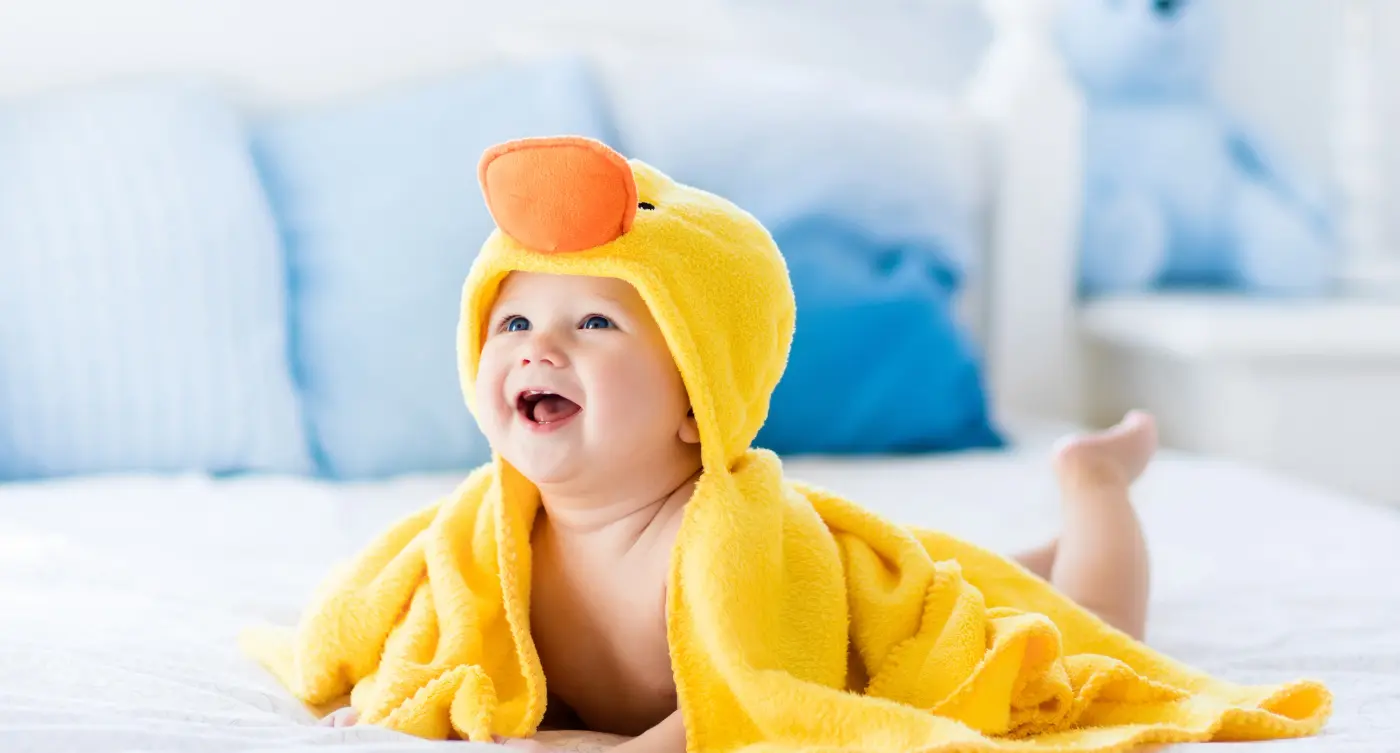
Once your youngster is clean and clean, it is time to dry up. bath towels should be of high quality, because they are necessary to keep the baby warm, comfortable, and skin-friendly.
What to Look For:
- Hooded Design: Helps keep baby’s head warm immediately post-bath.
- Soft, Absorbent Fabric: Choose organic cotton or bamboo for a gentle touch.
- Large Size: Ensures full coverage for swaddling and can be used as your baby grows.
Avoid harsh dyes, fragrances, or stiff materials that can irritate delicate skin. Always wash your bath towels with fragrance-free detergent and separate them from heavily soiled laundry to maintain their softness and purity.
Baby Bath Toys: Turning Routine into Fun
Imagination and fun come with Bath Toys. They not only help to make the bath really fun but also they help your baby to develop in important ways.
Benefits of Bath Toys:
- Encourage fine motor skills through grasping, squeezing, and pouring.
- Stimulate sensory play with bright colors, gentle textures, and playful sounds.
- Keep your baby entertained and relaxed, giving you time to clean safely.
Best Toy Picks:
- Floating boats or animals
- Squeaky toys (sealed to prevent mold)
- Pouring cups or stacking buckets
- Bathtub crayons or foam letters (for toddlers)
- Soft, washable waterproof books
Always clean and dry bath toys thoroughly after each use to prevent mold and bacteria buildup. Rotate toys regularly to keep bath time fresh and engaging.
Baby Bathing Suit: What You Need Beyond the Tub
At home, your baby doesn’t need a baby bathing suit, but it becomes a must-have for swimming pools, beach days, and outdoor water fun. A well-designed bathing suit keeps your baby safe, comfortable, and sun-protected while playing in or near water.
What Makes a Good Baby Bathing Suit?
- Comfort: Choose soft materials with flat seams to avoid skin irritation. Avoid anything too tight or with scratchy tags.
- UV Protection: Look for suits with UPF 50+ to shield delicate skin from harmful UV rays.
- Swim Diapers: Many baby bathing suits come with built-in swim diapers or pair easily with reusable ones.
For extended outdoor play, consider full-body suits or rash guards for additional coverage. Always rinse suits after use to remove chlorine or salt, and let them dry completely before storing.
Step-by-Step Baby Bath Routine
Creating a consistent, calm routine sets your baby at ease and helps with sleep training. By establishing reliable steps, both baby and caregiver can feel more relaxed and confident at every stage of bath time.
- Preparation
Gather everything you need:
- Clean bath towel
- Fresh diaper and clothes
- Baby shampoo and gentle soap
- Bath tub or seat
- A toy or two for engagement
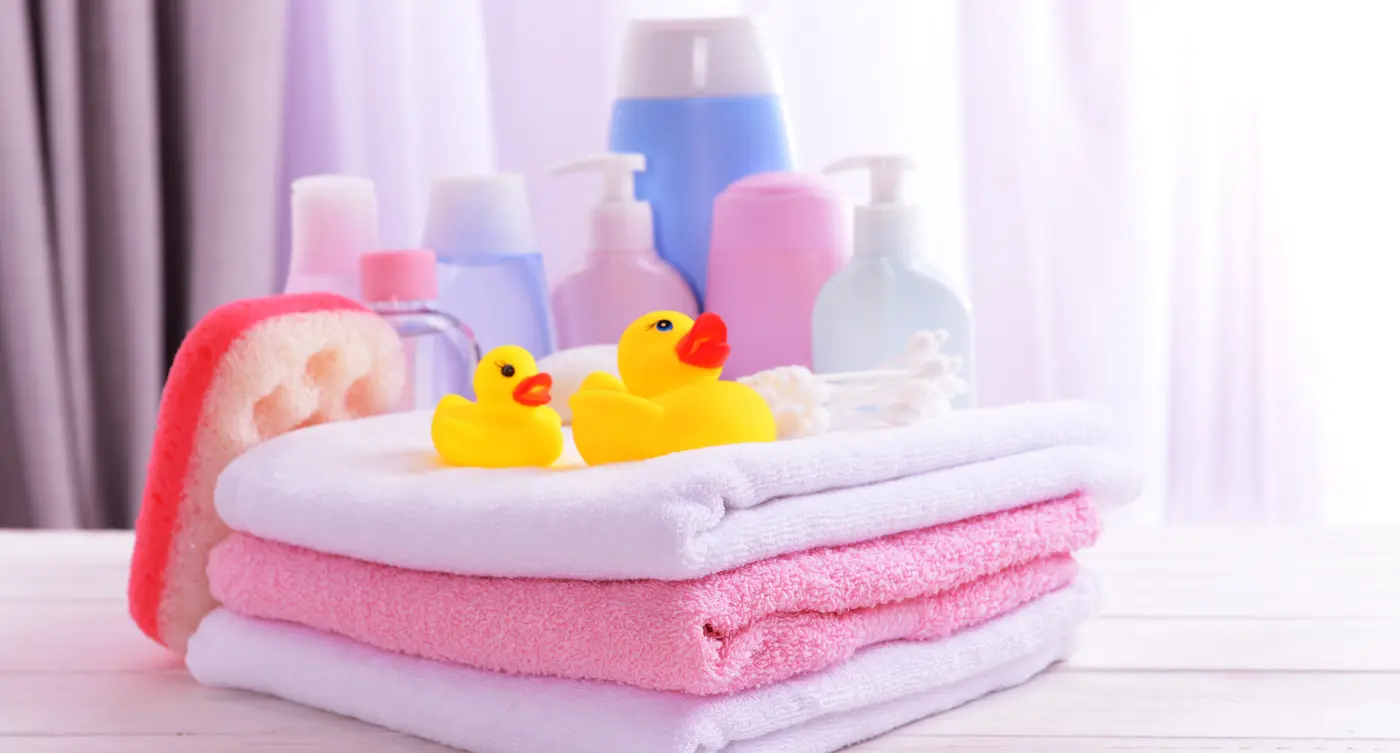
Fill the tub with 2–3 inches of warm water (about 100°F). Always test the water temperature with your elbow or a bath thermometer before placing your baby in.
- Bathing Process
- Support your baby’s head and neck and gently lower them into the water.
- Use your hand or a small cup to wet the body gradually.
- Apply mild soap starting from the neck down, and wash with a soft cloth.
- Gently clean the scalp and hair last to prevent chilling.
- Rinse thoroughly and wrap immediately in a cozy bath towel.
- Post-Bath Care
- Gently pat your baby dry—avoid rubbing to prevent skin irritation.
- Apply lotion or baby oil to retain moisture.
- Put on a clean diaper and outfit.
- Take a few minutes to cuddle, sing, or enjoy quiet bonding.
This basic habit converts a bath time into a positive, important experience and brings hygiene, better sleep, and trust.
Tips to Make Bath Time Easier
Here are some helpful reminders to make each baby bath smoother and more enjoyable:
- Sing or talk softly: This calms your baby and strengthens your bond.
- Use a warm room: Keeping the room cozy prevents post-bath chills.
- Bath time before bed: An evening bath helps set the stage for sleep.
- Keep essentials nearby: Always prep in advance so you never leave your baby unattended, even for a moment.
Baby Bath Checklist: What You Really Need
Item Why It’s Needed
- Bath tub safe bathing environment
- Bath Seat- Extra support for older babies
- Gentle soap/shampoo, non-irritating, tear-free cleansing
- Washcloths are gentle on the baby’s skin
- Bath towels: warmth and softness post-bath
- Bath toys encourage fun and play
- Bathing suit for pool or outdoor use
- Lotion or oil, moisturize after bath
Baby Bath Safety Guidelines
Your baby’s safety is always the top priority. Here are a few essential do’s and don’ts to keep in mind during bath time:
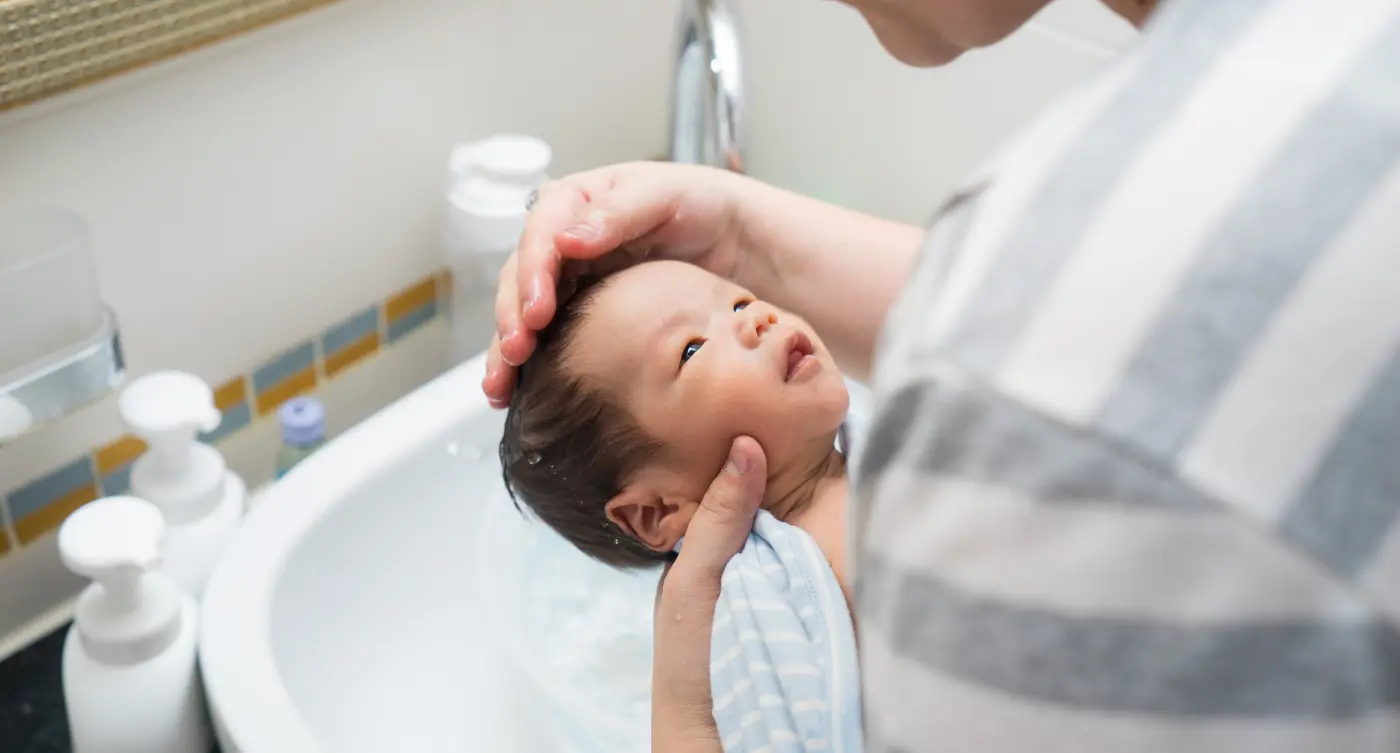
Do:
- Always check the water temperature to ensure its comfortably warm.
- Keep one hand on your baby at all times during the bath.
- Dry your baby thoroughly after bathing to avoid skin issues, especially in folds.
Don’t:
- Leave your baby unattended, even for a second.
- Use strong detergents or heavily scented products on your baby’s skin.
- Overfill the tub or allow your baby to be submerged too deeply.
FAQs: Baby Bath Time Questions Answered
How often should I bathe my baby?
Newborns 2–3 times a week. Older babies may benefit from daily baths if they are eating solids or crawling.
What temperature is best for a baby bath?
Ideal temperature is around 100°F (37.8°C)—warm, not hot.
When can my baby use a bath seat?
Only after they can sit unsupported, usually around 6 months.
What soap is best for baby baths?
Use fragrance-free, tear-free, pediatrician-recommended baby soaps.
Should I bathe my baby at night or morning?
Evening baths help relax your baby before bed, but you can pick whatever time works best for your schedule.
Final Thoughts: Making Baby Bath Time Special
Each baby bath is a chance to establish trust, happiness, and connection between a baby and its parents. The proper tools and the proper touch can include the mildest of soaps to the amusing of baby bath toys.
Picking a secure baby bath tub, enshrouding your little one in fluffy baby bath towels, and making the experience a touching habit, you are growing your baby, one bubble at once.
Explore more on Pregnancy Must –
